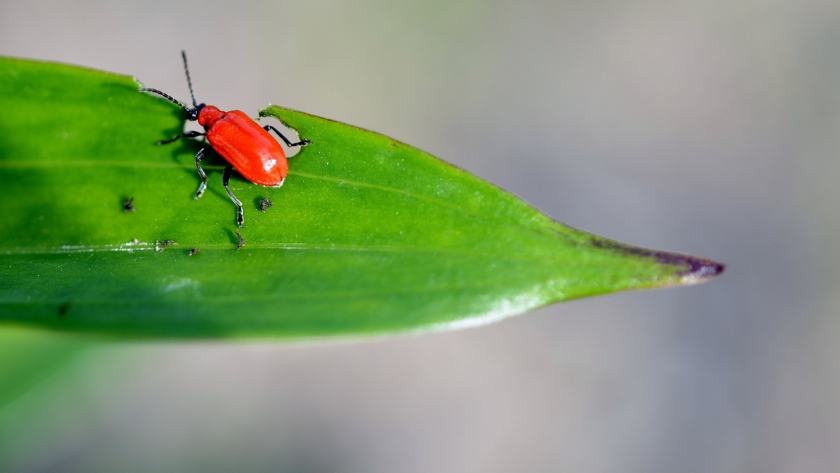Have you ever opened a bag of flour only to find tiny bugs crawling around inside? It’s not exactly a pleasant sight, and it can leave you wondering if the flour is safe to eat.
As it turns out, those little bugs in your flour are not harmful to humans. In fact, they’re quite common, especially in warm and humid climates.
But what are these bugs exactly? They’re known as weevils and they belong to the beetle family. Weevils can lay their eggs in grains like wheat, rice, and cornmeal, which can then hatch into larvae that feed on the grain.
While it may seem gross at first glance, consuming weevils or their larvae won’t cause any harm to your health.
So next time you come across some buggy flour, rest assured that it’s still safe for consumption!
Key Takeaways
- Flour bugs, also known as weevils, are safe to eat and even considered a good source of protein.
- Properly identifying the type of bug present is crucial before consuming it.
- Storing flour in airtight containers, using natural repellents, and regularly cleaning out your pantry can prevent infestations.
- Freezing newly bought grain products for at least 72 hours before storage can kill any eggs present.
Are Flour Bugs Safe to Eat?
Don’t worry, eating a few flour bugs won’t harm you! In fact, they are safe to eat and can even be considered a good source of protein.
Flour bugs, or weevils, are commonly found in grains such as wheat and rice. While they may not look appetizing, they do not pose any health risks.
In addition to their safety, flour bugs also have some nutritional value. They contain high levels of protein and other nutrients that can benefit the body. However, it’s important to note that consuming large amounts of flour bugs is not recommended as they may cause digestive discomfort.
As for culinary uses, some cultures around the world incorporate insects into their dishes as a source of protein. So next time you come across a few flour bugs in your pantry, don’t be too quick to throw them away!
How to Identify Flour Bugs
Let’s talk about how to identify flour bugs.
There are two key things to look out for: their appearance and behavior. Flour bugs are small, reddish-brown insects that move quickly and can often be found near stored grains and flours.
To prevent infestations, it’s important to store your flour in airtight containers and regularly check for any signs of bug activity.
Appearance and Behavior
You’ll notice that some bugs in flour have a tendency to crawl around, but did you know that these little critters are actually safe for consumption? While it may sound unappetizing, insects such as weevils and beetles are high in protein and offer nutritional value. In fact, they have been consumed by humans for centuries in many cultures around the world.
However, before you start adding bugs to your diet, it’s important to note that not all insects found in flour are safe to eat. Some species can cause harm or contain toxins. It’s crucial to properly identify the type of bug present before consuming it.
If you’re unsure or uncomfortable with the idea of eating insects, simply sifting out any visible bugs from your flour is an easy solution.
Prevention Methods
One effective way to keep unwanted visitors out of your pantry is by storing your flour in airtight containers. This will prevent insects and other pests from getting into your flour and making it their home. You can use plastic or glass containers with tight-fitting lids to store your flour, making sure that there are no gaps where pests can enter.
Another pest control technique for keeping bugs out of your flour is by using natural repellents such as bay leaves, cloves, or peppermint oil. These herbs contain natural oils that are unpleasant to insects and they won’t want to stick around. Simply place a few bay leaves or cloves in the container with your flour or add a few drops of peppermint oil onto a cotton ball and place it near the container.
This will not only keep pests away but also leave a pleasant scent in your pantry. By following these simple storage and pest control techniques, you can ensure that your flour remains safe to eat and free from unwanted guests.
What to Do if You Find Flour Bugs
If you come across flour bugs, don’t panic – there are steps you can take to salvage the situation.
The first thing to do is remove all infested flour from your pantry and discard it in a sealed plastic bag. This will prevent the bugs from spreading to other food items.
Next, thoroughly clean out your pantry with warm soapy water, paying close attention to crevices and corners where bugs may hide.
To prevent future infestations, take preventive measures for flour bugs. Store flour and other dry goods in airtight containers made of glass or heavy plastic. Avoid storing food items for too long as this can attract insects.
Finally, consider freezing newly bought grain products for at least 72 hours before placing them in storage containers to kill any eggs that may be present.
By following these simple steps, you can keep your kitchen free of pesky flour bugs and ensure the safety of your food supply.
Common Myths About Flour Bugs
When it comes to those pesky little creatures that invade your pantry, there are a lot of common myths about them that may have you feeling uneasy. One of the biggest myths is that flour bugs are harmful to eat. While nobody wants to find an infestation in their food, flour bugs aren’t harmful to humans if ingested. They won’t make you sick or cause any health concerns.
Another common myth about flour bugs is that they indicate poor quality or contaminated food. However, this isn’t necessarily true either. Flour bugs can get into even the highest quality and most well-packaged foods, and their presence doesn’t necessarily mean the food is contaminated.
It’s important to keep in mind that while finding an infestation can be frustrating and unsightly, it doesn’t pose any risks to your health or safety.
How to Avoid Flour Bugs in the Future
To avoid flour bugs in the future, it’s important to properly seal all food containers and regularly clean out your pantry. Here are some proactive measures you can take:
-
Store your flour in an airtight container. Flour bugs thrive in warm, humid environments. By keeping your flour in a sealed container, you can prevent moisture from getting in and creating an environment that is conducive for insect growth.
-
Freeze your flour. Freezing your flour for at least 72 hours before using it can kill any eggs or larvae that might be present.
-
Use natural remedies. Essential oils such as peppermint and cinnamon have been known to repel insects. You can add a few drops of these oils to cotton balls and place them inside your storage containers or on shelves where you keep your dry goods.
-
Keep a clean pantry. Regularly cleaning out old food products and wiping down shelves with vinegar or lemon juice can deter insects from making themselves at home in your pantry.
-
Check expiration dates. Purchasing smaller quantities of flour or other dry goods and checking their expiration dates before use can help ensure that you’re not unknowingly introducing expired products into your pantry.
By taking these simple steps, you’ll be able to keep those pesky flour bugs at bay and ensure that the food in your pantry stays fresh and safe for consumption.
Frequently Asked Questions
What should I do if I accidentally ingest a flour bug?
If accidentally ingesting a flour bug, don’t panic as it’s unlikely to cause harm. However, preventative measures, such as storing flour in airtight containers and identifying infestations early on, can reduce the risk.
Can flour bugs cause any health problems or illnesses?
Flour bugs are generally safe to eat, as they have no harmful effects on humans. However, preventing infestations is important through proper flour storage and avoiding common mistakes. Here are some tips and tricks to keep your flour bug-free.
Are flour bugs only found in certain types of flour?
Some types of flour have fewer bugs than others, like those with lower moisture content. To prevent infestations, store flour in airtight containers and freeze for a week before use.
How long can flour bugs survive in a bag of flour?
Flour bug infestations can occur in any type of flour and can survive for months in a sealed bag. Preventative measures include freezing the flour for 72 hours before use or storing it in an airtight container with bay leaves.
Can flour bugs infest other food items in my pantry?
To prevent infestation, it’s important to identify flour bugs and dispose of infested items. Check nearby food containers for signs of bugs, such as webbing or larvae. Keeping a clean pantry can also help avoid future problems.
Conclusion
So there you have it, folks. Flour bugs may not be the most appetizing sight to see in your pantry, but they’re safe to eat. In fact, they’re a great source of protein and fiber! Who knew?
But don’t let that give you an excuse to leave them be. A clean and well-organized pantry is key in preventing these critters from making themselves at home in your flour.
So next time you’re baking up a storm, keep an eye out for any unexpected guests and take the necessary steps to prevent their return.
Happy baking!




